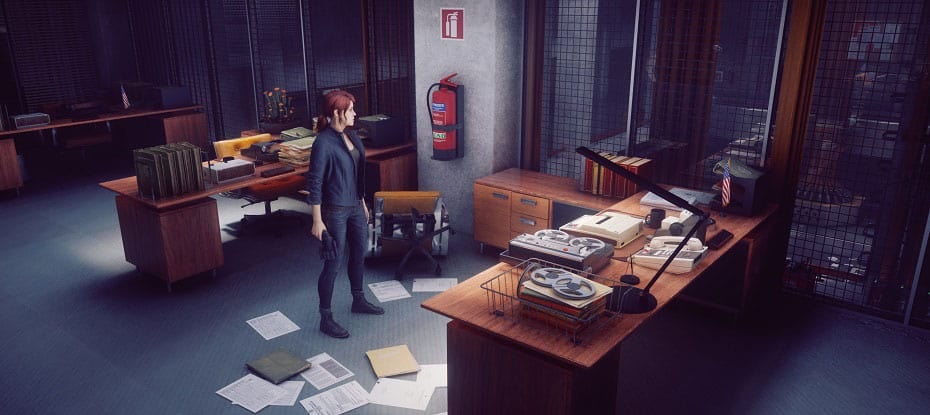The gaming industry thrives thanks to technological advances in hardware, computational power, and graphics.
Many gaming companies strive to deliver increasingly realistic ambient lighting with the new generation of graphics cards. PC gamers will have noticed that there are a lot of graphics settings they can play with to make the game more visually attractive and lively, such as ambient occlusion.
So, what is ambient occlusion?
This guide provides an overview of this setting and explains its various types.
Table of ContentsShow
What Is Ambient Occlusion?

Ambient occlusion is a rendering technique that provides an estimation of how bright light should be at different parts of a visible surface.
It considers various factors, such as the environment of the game and the position of the light source. It provides a realistic simulation of any objects that block the ambient light from different sources, adding authenticity to 3D video games by mimicking real light distribution.
Ambient occlusion was first seen in 2001. The movie Pearl Harbor introduced it for the first time. Although the film wasn’t remarkable, its CGI helped pave the way for game graphics to progress.
Ambient occlusion in the gaming industry was introduced in 2007. The game development company Crytek implemented it in their game Crysis, which received numerous accolades and sold over 3 million copies.
However, as that shadowing was too computationally demanding for many gaming rigs in the 2000s, countless gamers couldn’t benefit from this feature until much later. Even so, many enjoyed the realistic visuals that the game had to offer.
Like any other technology, ambient occlusion has considerably improved over time. Below are some different varieties of it.
Types Of Ambient Occlusion

Various graphics cards and their architectures and rendering techniques contributed to different ambient occlusion improvements. As a result, there are multiple approaches common in today’s titles.
Some of the most commonly found settings include SSAO, HBAO, HDAO, and VXAO.
SSAO

SSAO or Screen-Space Ambient Occlusion was the type of occlusion introduced by Crytek in their groundbreaking Crysis. However, SSAO doesn’t consider the space and elements that produce shadows to conserve processing power.
Instead, SSAO looks at the pixels around the element and their depth, which makes CPU usage more efficient while introducing dynamic rendering to make the ambient light more realistic.
Instead of focusing on the entire screen, SSAO measures ambient occlusion in pixel depth at a portion of the screen. However, that brings drawbacks, such as noise and potentially imprecise shadow distribution, if the pixels aren’t properly measured.
SSAO didn’t have waiting times, which made games run more smoothly. However, graphics card performance and video game requirements have increased, introducing novel techniques.
HBAO

HBAO, short for Horizon Based Ambient Occlusion, was the subsequent enhancement in graphic rendering techniques. NVIDIA introduced this approach to address the grain and noise that came with pixel depth measurements of SSAO. It does so by considering the ambient light and the neighboring environment instead of just the individual pixels.
With the help of geometry, **it’s much more efficient at rendering shadows and lighting**. The major disadvantage of HBAO is that, unlike SSAO, **it requires extra processing power in both the CPU and GPU**. Later, HBAO+ was introduced to provide a less performance-demanding algorithm for light and shadow sampling.
HDAO

HDAO, also known as High Definition Ambient Occlusion, is a technique used by AMD graphics cards to rival NVIDIA’s HBAO. The single distinction is that they’re created specifically for their respective manufacturers’ GPUs. There are scarcely any differences between HBAO and HDAO.
VXAO

VXAO, or Voxel Ambient Occlusion, is currently the closest video games can get to reality in terms of lighting and shadow rendering. However, relatively few games boast this setting, mainly because it’s too challenging and will test the limits of your processor and graphics card. It also uses a different approach than SSAO and other techniques.
Simply put, VXAO displays shapes and estimates the shading outside the view you’re seeing. This technique contributes to the realism of scenes, allowing for a clear differentiation between modern games and their predecessors in terms of visuals.
More technically, VXAO converts pixelated objects on the screen into voxels, which are 3D, cube-shaped pixels, hence the term voxel ambient occlusion. As a result of their 3D structure, voxels can estimate the dimensions of certain geometrical objects inside games, which results in accurate and polished light and shadow rendering.
Ambient Occlusion vs. Ray Tracing

SSAO focuses on pixel depth and doesn’t consider shapes and objects, leading to dim corners, noise, and inaccurate shadows. On the other hand, Ray Tracing, as a more contemporary technology, focuses on more factors, including the geometry of various shapes and objects, surfaces, and light, to render precise and lifelike shadows.
It’s also a step forward from HBAO and HDAO, which focus purely on geometry. Additionally, Ray Tracing processes and renders only what’s apparent to the player. In other words, the computation of lighting and shadows is only performed within the camera view field.
Currently, not many gamers can use Ray Tracing, mostly because the feature is native to RTX 2000, 3000, and RX 6000 cards, and only a few games support this cutting-edge feature. However, as the gaming industry advances, more games will undoubtedly support this groundbreaking technology.
Conclusion
Ambient occlusion is a technology that calculates and estimates the appropriate brightness in the in-game lighting, bringing players closer to reality in the simulated environment. Various types of ambient occlusion have been developed throughout the years, alongside advanced graphics cards.
While more occlusion methods such as Ray Tracing will inevitably emerge, it’s important to keep in mind that ambient occlusion isn’t the only way to make your game look closer to reality. Still, it’s a intricate and fascinating technique that undoubtedly enhances both games and movies.

